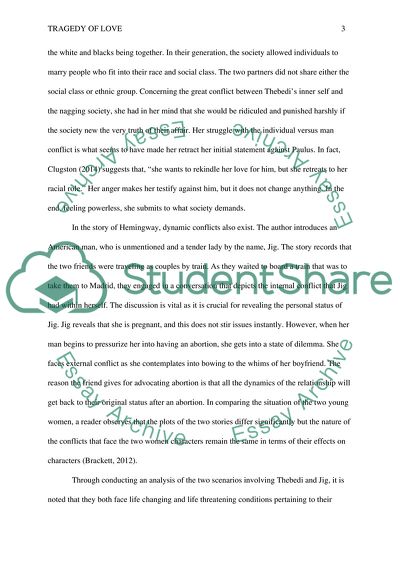Life-Changing and Life-Threatening Conditions in the Two Scenarios Country Lovers and Hills like White Elephants Literature review Example | Topics and Well Written Essays - 1500 words. https://studentshare.org/literature/1877715-the-paper-must-address-two-of-the-text-at-least-one-of-the-conflicts-and-three-of-the-literary-techniques-as-listed-in-the-guidelines
Life-Changing and Life-Threatening Conditions in the Two Scenarios Country Lovers and Hills Like White Elephants Literature Review Example | Topics and Well Written Essays - 1500 Words. https://studentshare.org/literature/1877715-the-paper-must-address-two-of-the-text-at-least-one-of-the-conflicts-and-three-of-the-literary-techniques-as-listed-in-the-guidelines.


